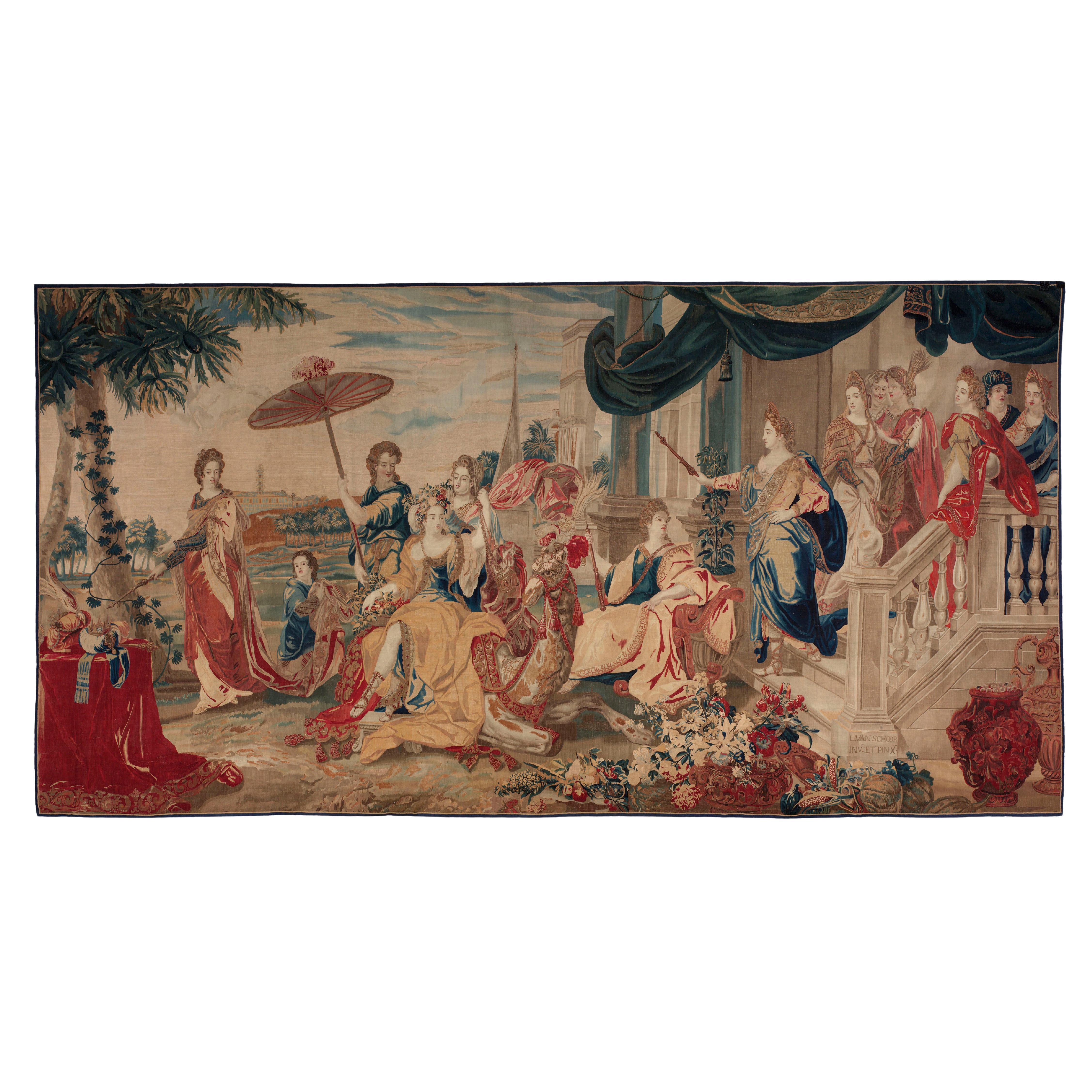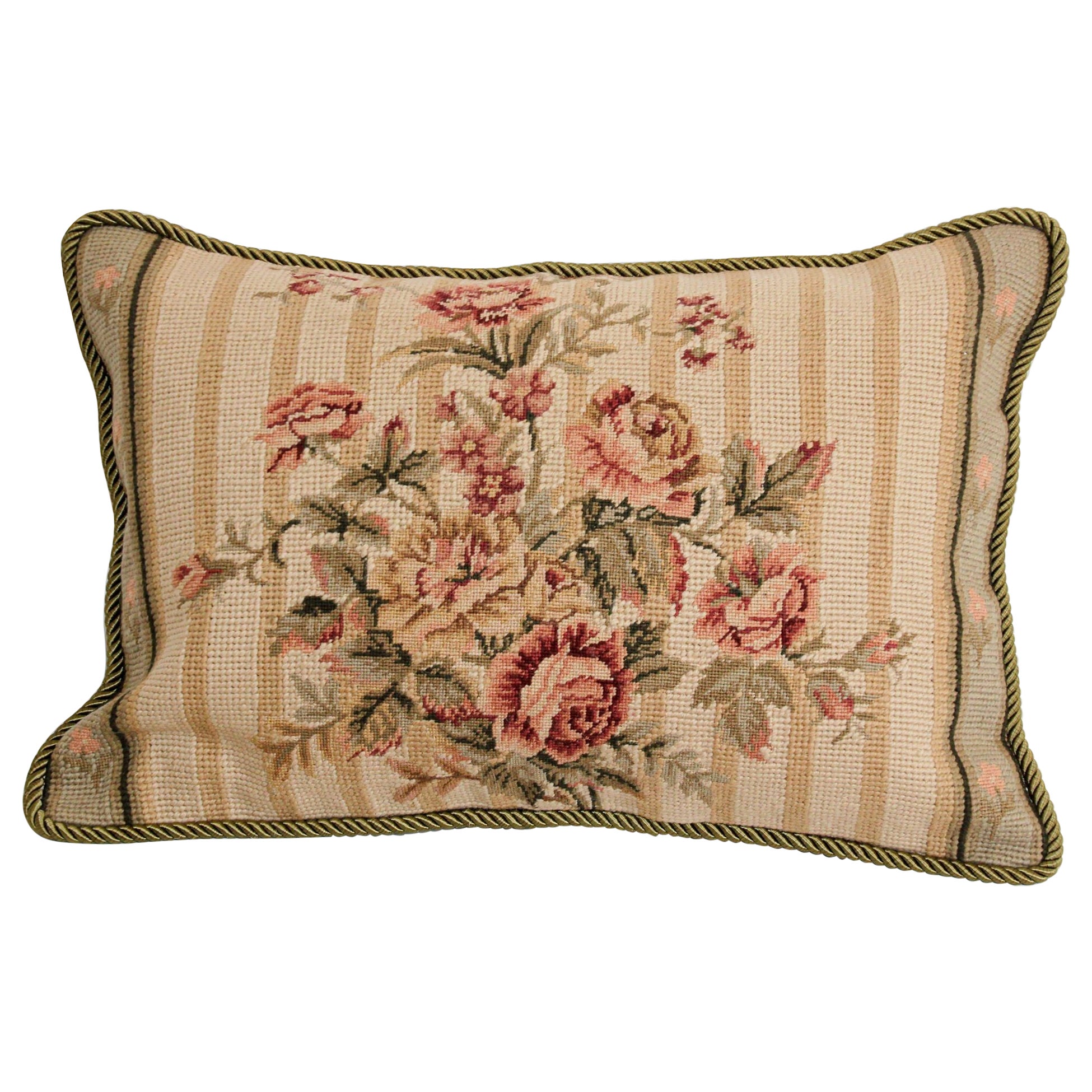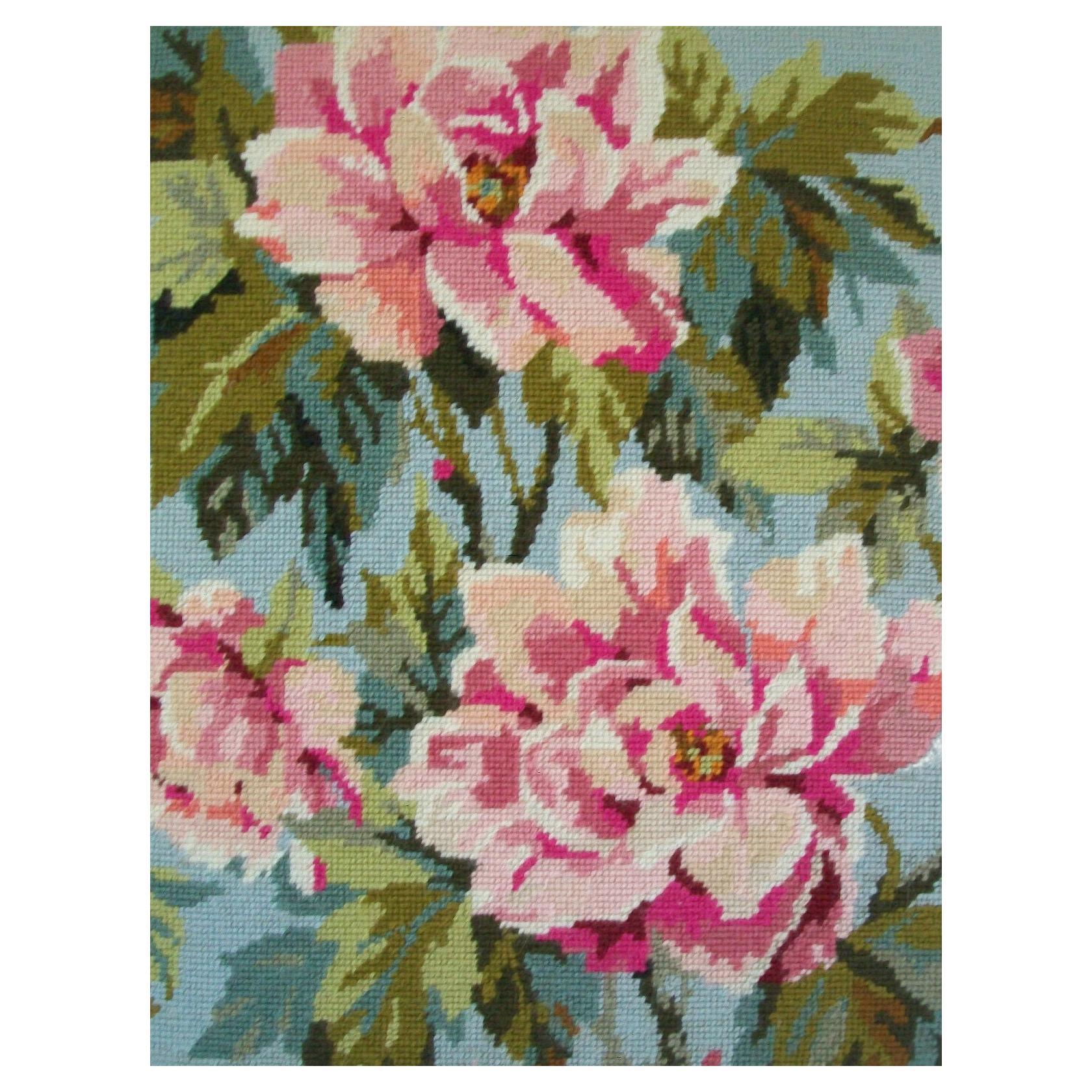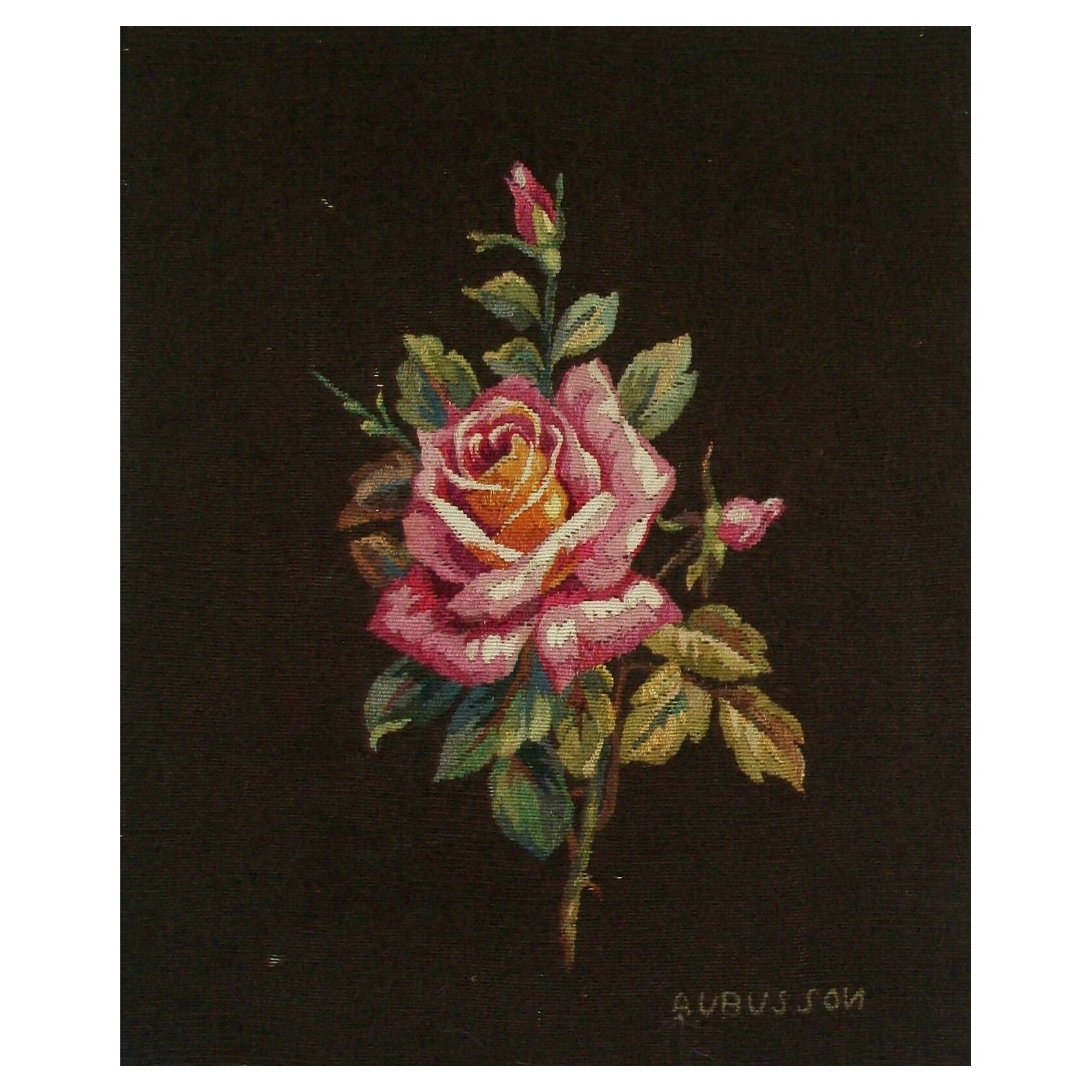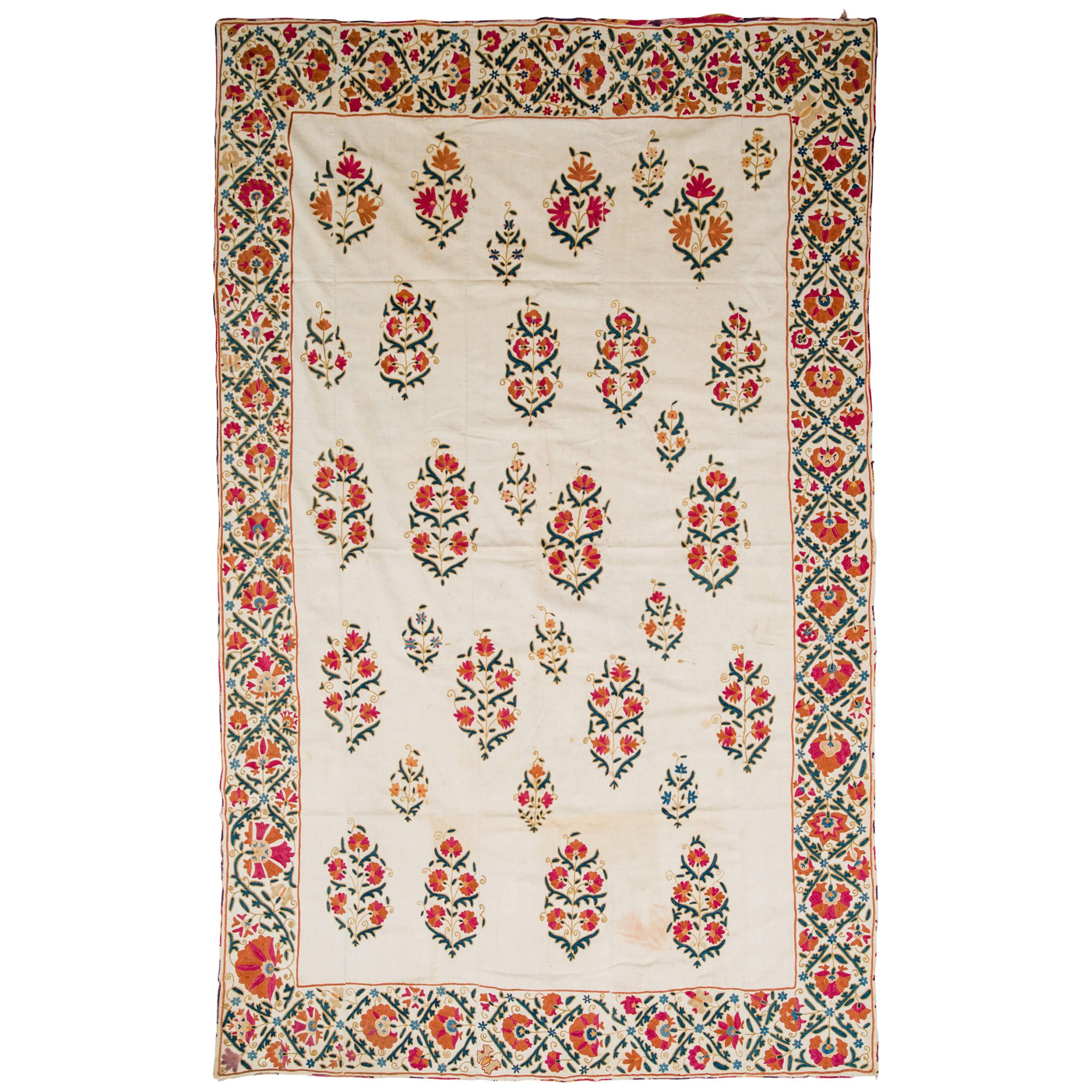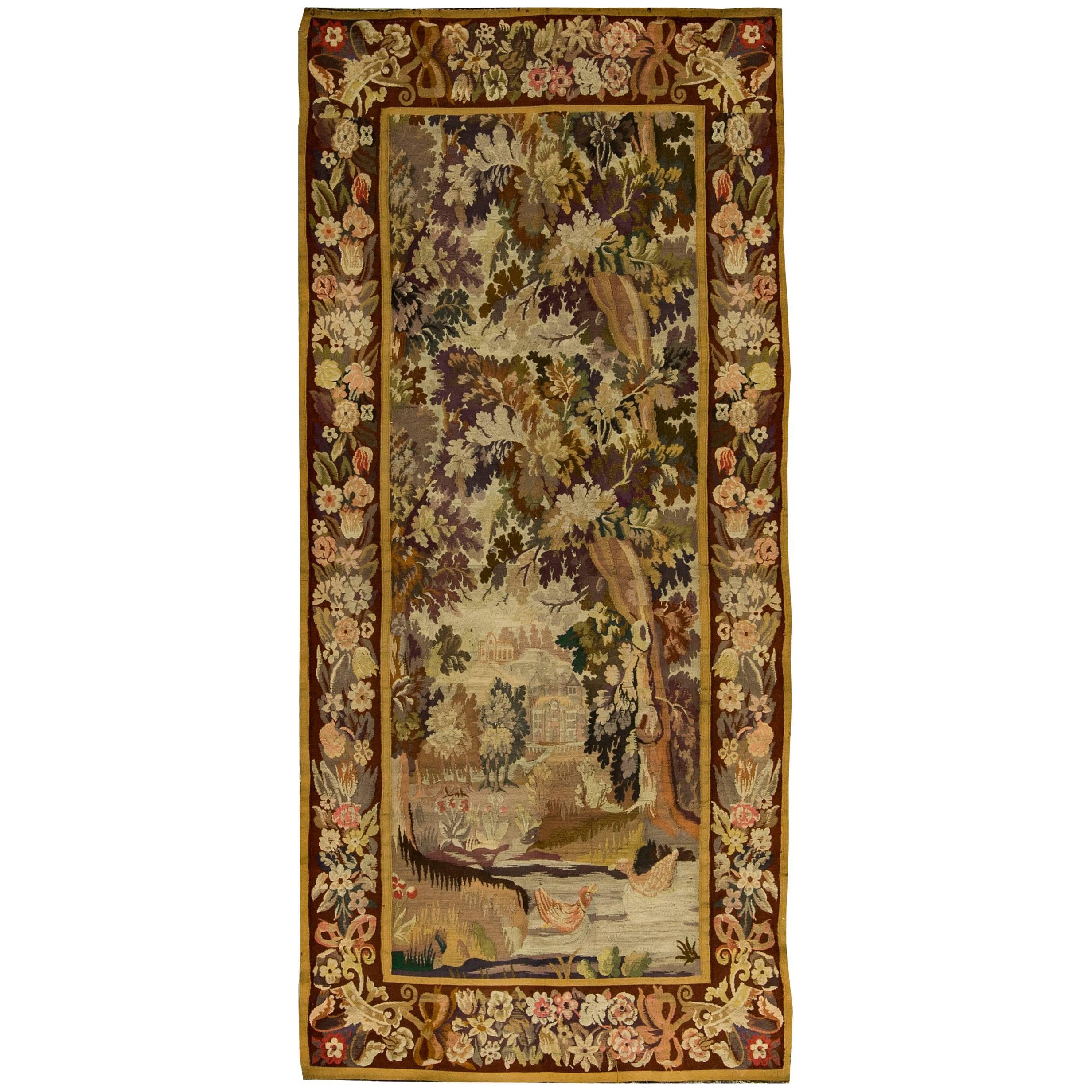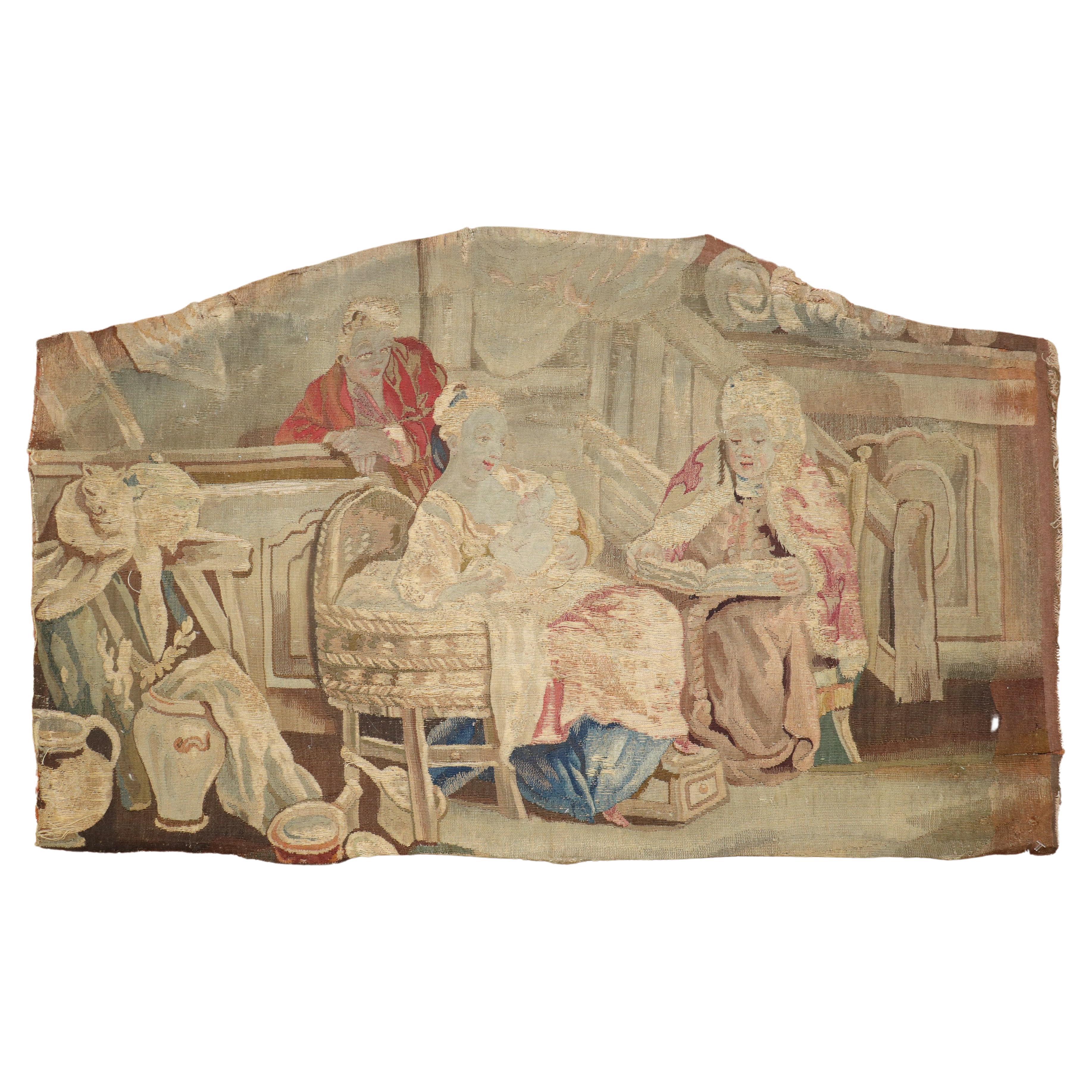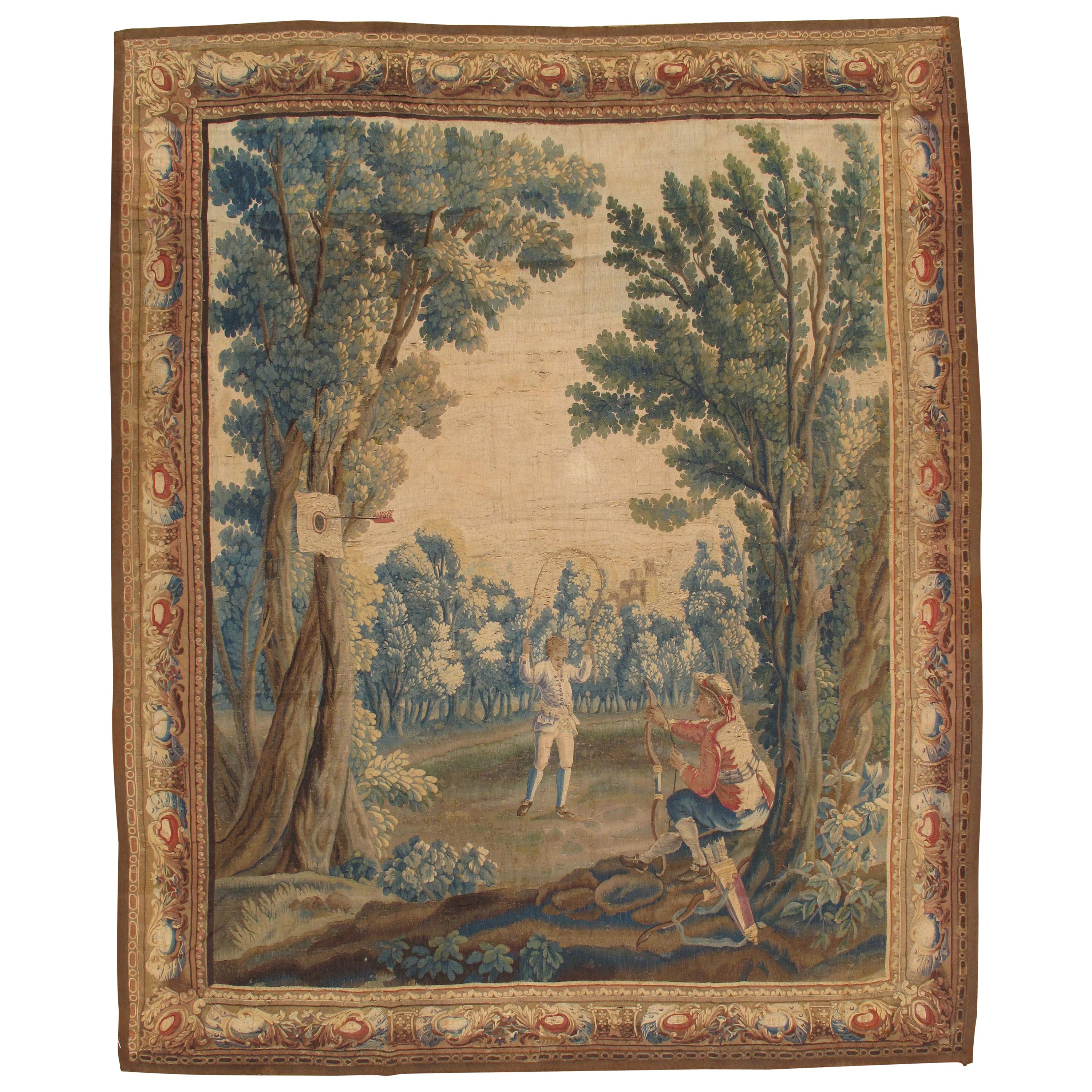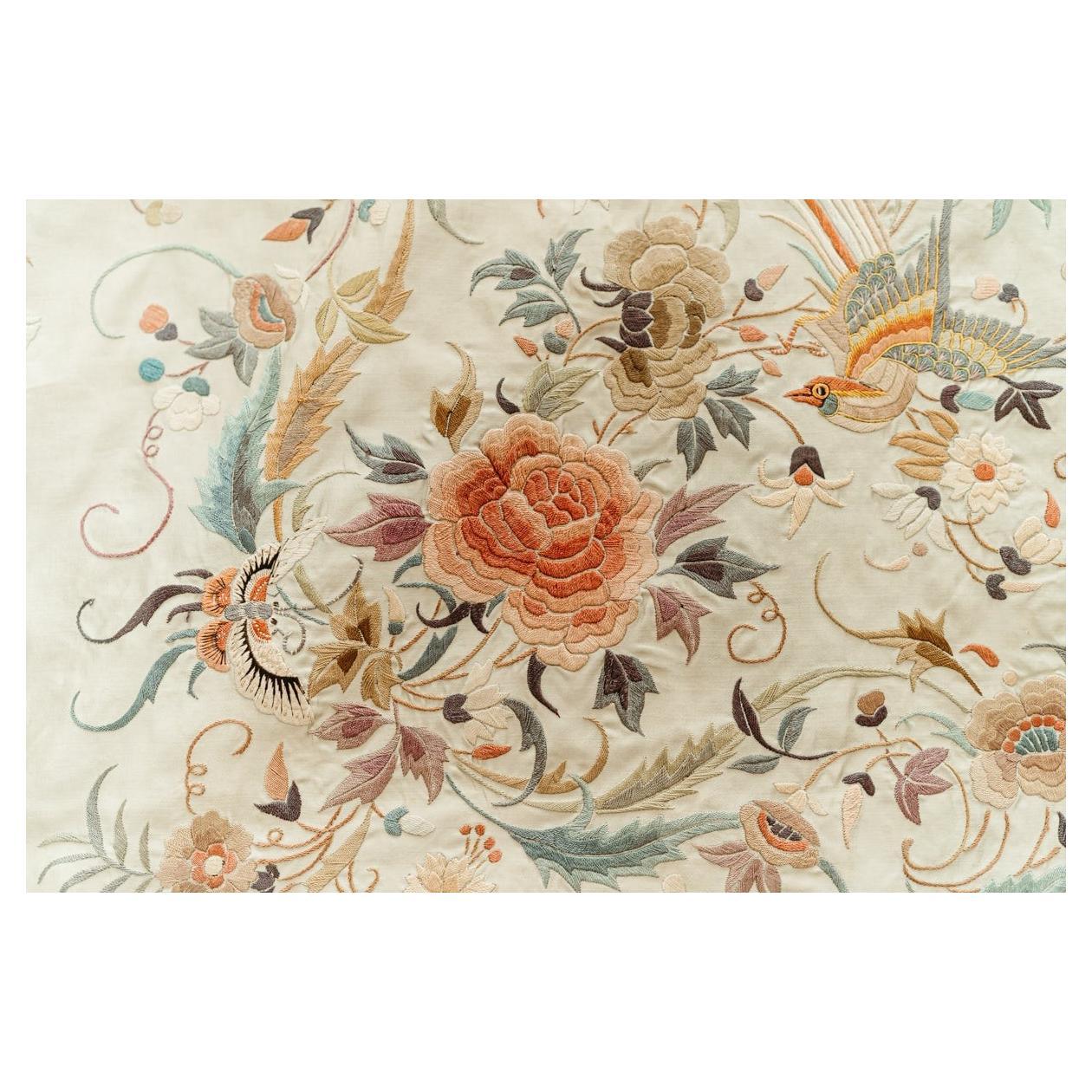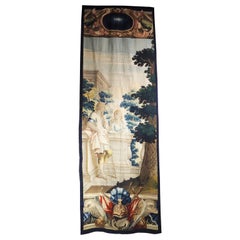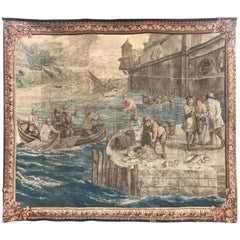
Rare 17th Century French Scenic Silk Tapestry with Needlepoint Border Chair Back
View Similar Items
Want more images or videos?
Request additional images or videos from the seller
1 of 10
Rare 17th Century French Scenic Silk Tapestry with Needlepoint Border Chair Back
About the Item
- Dimensions:Height: 30 in (76.2 cm)Width: 28 in (71.12 cm)Depth: 0.25 in (6.35 mm)
- Style:Classical Greek (In the Style Of)
- Materials and Techniques:
- Place of Origin:
- Period:
- Date of Manufacture:1600s
- Condition:Wear consistent with age and use. Minor losses. Good antique condition commensurate with age: Cut outs for chair arms, minor openings and with some restoration. Please inspect photos.
- Seller Location:Dallas, TX
- Reference Number:Seller: 909-81A1stDibs: U1110139063145
About the Seller
5.0
Platinum Seller
These expertly vetted sellers are 1stDibs' most experienced sellers and are rated highest by our customers.
Established in 1983
1stDibs seller since 2011
731 sales on 1stDibs
More From This SellerView All
- 17th Century Tapestry Fragment from BrusselsLocated in Dallas, TXFountain and Architecture This narrow silk and wool tapestry fragment dates to the 1600s and is from Brussels. It is depicting a statue of the Greek God, Hermes (Mercury to the Ro...Category
Antique 17th Century Belgian Louis XIV Tapestries
MaterialsWool, Silk
- Antique French Beauvais Tapestry from the Late 17th CenturyBy Beauvais Royal ManufactoryLocated in Dallas, TXThis is a large, horizontal fragment of a late 17th century Beauvais tapestry. Beauvais tapestry manufacture was one of the most well-known tapestry workshops in France. Beauvais was...Category
Antique Late 17th Century French Louis XIV Tapestries
MaterialsWool, Silk
- Tall 17th C. Wool and Silk Tapestry with Colorful Cartouche and Trophy DecorLocated in Dallas, TXProduced during the Louis XIV period, in the 1600’s, this colorful cartouche and trophy décor tapestry was hand-woven using wool and silk. Originally part of a much larger wall covering, the fragment has been placed over a linen backing and a navy-blue border now surrounds the scene. The quality of the craftsmanship of the fragment is quite apparent. Vibrant gold, green and blue hues still shine brightly, which are offset by darker colors such as brown and deep red. If you look closely, you will see gradient colors being used to depict shadows and movement in clothing. The scene features a man with a walking stick in his hand talking to a woman standing behind a baluster railing. Both are clad in flowing garments, with the woman in blue and the man wearing a light pink tunic...Category
Antique 17th Century Louis XIV Tapestries
MaterialsWool, Linen, Silk
- 17th Century French Aubusson - The Forging of the Arms of AchillesBy Aubusson ManufactureLocated in Dallas, TXThis tapestry from the mid to late 1600’s depicts the Forging of the Arms of Achilles. The figure on the right, Thetis, mother of Achilles, has commissioned armor for him to use in the Trojan War. Kneeling down with the helmet of Achilles in hand, is Hephasteus, God of fire, metal working, masonry, and blacksmiths. This piece was manufactured by Aubusson around 1670, based on the design by Issac Moillon (Painter of the King). Another tapestry like this can currently be seen in the Hospices of Beaune (Nicole de Reynie`s. Sylvain Laveissie`re. "Isaac Moillon (1614-1673), un peintre du roi a` Aubusson". Somogy, 2005, p. 158 a` 180.) A photo can be seen on the French Ministry of Culture website. Some fragments have been slipped in which are not perfect to the area’s scene, but, were perhaps part of the rest of this tapestry which was too damaged to use. The tapestry weavers who wove the faces, hands, feet and bodies of the people in tapestries were at the top in terms of skills. This weaver was superb in the depiction of all of the people. Note the delicacy of the hands of Thetis. For those who appreciate the truly old and beautiful without requiring perfect condition will cherish this 345 year old textile...Category
Antique 17th Century French Tapestries
MaterialsTextile
- Pair of Antique Tapestry Borders from Flanders, circa 1580Located in Dallas, TXA beautiful pair of tapestry fragments, hand-woven in Flanders (now Belgium), circa 1580. At roughly 132 inches (11 feet) long, the fragments were, originally, vertical borders to a very large and brightly colored tapestry. The colors have maintained their vibrancy over the last 400+ years, with deep blue, brown, green, and red accents over a gold and cream background. Although the fragments do not have identical scenes, it is readily apparent that they originated from the same source. At the top of each fragment is a bearded warrior clad in golden armor with a flowing blue cape and green greaves. A shield rests on the ground, supported by the soldier’s left hand, while his right hand lifts a spear into the air. Towards the center of the textile is a pair of musicians, one strumming a lute, while the other plucks a lyre. At the bottom of each tapestry is a single female figure, well-dressed and sitting on a bench with one arm overhead. The remaining areas have been filled with fruit bouquets, architectural elements, and other figurative representations. A more recent navy blue border surrounds the scenes and the backs have been lined with a mauve colored linen. Our hand-woven tapestry borders...Category
Antique 16th Century Belgian Renaissance Tapestries
MaterialsTextile, Wool, Silk
- Early 18th Century Brabant Brussels Tapestry Fragment with Swag and Rams HeadsLocated in Dallas, TXHand-woven by a workshop in the early 1700’s, this tapestry fragment features a lush fruit and floral display with swag and rams’ heads. The rams’ heads are located in the upper corn...Category
Antique Early 18th Century Belgian Louis XIV Tapestries
MaterialsTextile, Wool, Silk
You May Also Like
- 17th Century Brabant, Belge TapestryLocated in Atlanta, GAAn exquisite and outstanding 17th century tapestry in silk and wool from Belgium. Signed "BB" (Brabant - Belge) and "LeClerc". Very unique for its subject matter and coloration. Wond...Category
Antique 17th Century Belgian Tapestries
MaterialsWool, Silk
- Brussels Late 17th Century Tapestry Asia from a Four Continents Series 9'4 x 18Located in New York, NYBrussels late 17th century tapestry, "Asia" from a Four Continents series. Designed by Lodowijk van Schoor, Woven in the Workshop of J. van der Borcht I Size: 9'4 high x 18' wide. Wool, silk and metal thread pattern wefts This extremely colorful and attractive late Baroque Flemish tapestry with a popular iconography is the product of two important figures in 17th century Brussels weaving. J. van der Borcht I (circa 1650–1713) was a master weaver and tapestry entrepreneur who established a most distinguished family tapestry firm and was followed by J. van der Borcht II, Jasper van der Borcht, Pieter van der Borcht and Jan Frans van der Borcht, taking the operations into the mid18th century. Their wealthy patrons allowed the firm to engage some of the best designers and as a result the artistic quality, as well as the sheer technical execution, is always high. The Van der Borchts wove tapestry series (or single pieces) of Mythological Scenes, Months, Allegories, Armorials, Triumphs of the Gods, The Continents, as well as more down-to-earth genre scenes designed or inspired by David Teniers II or Teniers III. Their artist designers included, besides the Teniers, Jan van Orley, Augustin Coppens, Gerard Lairesse, Phillipe de Hondt, and the Antwerp-born Lodowijk van Schoor (circa 1650–1702), the designer of U-1362. Van Schoor was the successor of David Teniers III. He was the designer or co-creator of about fifteen sets of tapestries. His cartoons were utilized and copied in both the Northern and Southern Netherlands, and continued popular well into the 18th century. His style, especially in his later works, is more harmonious and refined than Teniers and he avoided genre scenes with peasants. Van Schoor sometimes collaborated with other artists, for example Lucas Aertschellinck (1620 – 1699) who specialized in landscape backgrounds as in the set of Mythological Scenes” woven circa 1700 in the Van der Borcht shop. He did not collaborate on this tapestry, Van Schoor’s figures are graceful and his color schemes vivid, in keeping with the best of contemporary Flemish tapestry. Van Schoor’s designs influenced artists working at great remove from Brussels, even so far as the Florentine workshop of Bernini and Demignot where a Van Schoor inspired “Four Continents” set was woven in the early 1720s. The “Four Continents” or “Four Parts of the World” was a popular theme in the 17th and 18th centuries for tapestry patrons. Each continent was identified by native peoples and animals: America (North and South together) by Indians and the Turkey bird...Category
Antique 17th Century Belgian Tapestries
MaterialsWool
- Vintage French Aubusson Tapestry Style Needlepoint Lumbar PillowLocated in North Hollywood, CAVintage French Aubusson Tapestry style needlepoint lumbar pillow. This Aubusson style pillow features a charming bouquet of pink roses, see...Category
Mid-20th Century European French Provincial Pillows and Throws
MaterialsCotton
- Anchor, Peony, Vintage Floral Needlepoint Tapestry, Canada, Mid-20th CenturyBy AnchorLocated in Chatham, ONANCHOR PENELOPE - 'Peony' - Vintage floral needlepoint tapestry - 100% wool - vertical or horizontal placement - padded and mounted to a Mas...Category
Mid-20th Century American Romantic Tapestries
MaterialsWool, Canvas, Masonite
- Aubusson - Vintage Silk & Wool Floral Tapestry - Signed - France - 20th CenturyBy Aubusson ManufactureLocated in Chatham, ONAubusson - Vintage silk and wool floral tapestry - mounted to the original stretcher along the edges - unframed - signed lower right - France - early/mid 20th century. Good vintag...Category
Early 20th Century French Art Deco Tapestries
MaterialsWool, Silk
- 19th Century Uzbek Silk Embroidered Suzani TapestryLocated in New York, NY19th century Uzbekistani hand spun linen Suzani with silk embroidered floral motif and silk ikat border. Reverse side has original antique Fine hand printed cotton backing.Category
Antique 19th Century Uzbek Suzani Tapestries
MaterialsLinen, Silk
Recently Viewed
View AllMore Ways To Browse
Antique Flower Garden Quilt
17th Century Wooden Cherub
Antique Garden Quilt
Flower Basket Quilt
Greek Needlepoint
Antique 17th C Textile
Antique Basket Quilt
Antique Basket Quilts
Fortuny Drapery Panels
Fortuny Drapery
Hermes Blanket Label
Panama Midsummer Milano
Uzbek Belt
Federica Tondato
Pendleton Chief Joseph Blanket Vintage
Vintage Kantha Blanket
Antique White Crib Furniture
Antique Patchwork Quilt Collectables

